
MADISEN GITTLIN DECEMBER 17, 2018
Earth2Green Coalition for Resource Recovery Update
Prepared by Heather Carmona & Madisen Gittlin
Increasing global climate volatility affirms the need to develop and prepare communities to be more resilient and responsive. Over the past year, Earth2Green has made significant strides. We’re building more Sustainable Cities through Community Projects and supportive Infrastructure as well as advancing smart solutions for community resiliency and transformation. We’re making demonstrated progress towards a more ‘circular economy’ to improve lives and protect our planet, and we look to partner with you as we continue our momentum into 2019.
Resiliency Education & Demonstration Work
Organics Materials Resource Management
As compost is more often recognized for its individual household application than its use in an institutional or large-scale urban development, the use of compost as a tool for community resource management is an emerging area of our work where collaboration from additional partners is desired. Currently, Earth2Green is researching best practices to share with other cities globally for stormwater and soil management and is seeking additional partners to build out demonstration and piloting efforts by teaming up with construction and development companies.
Additionally, organic waste and food waste management includes the use of micro-digesters and food donations as part of an overall food waste diversion program, resulting in an alternate power source that can also serve as a needed network and “infrastructure” during times of crisis for cities.
In 2018, we worked with the cities of Riverside, CA and Indio, CA to assess food waste feedstock generation potential and to model scenarios for expanded food waste to biogas infrastructure planning. We are looking for an additional 1 to 2 cities with whom to continue this work in 2019.
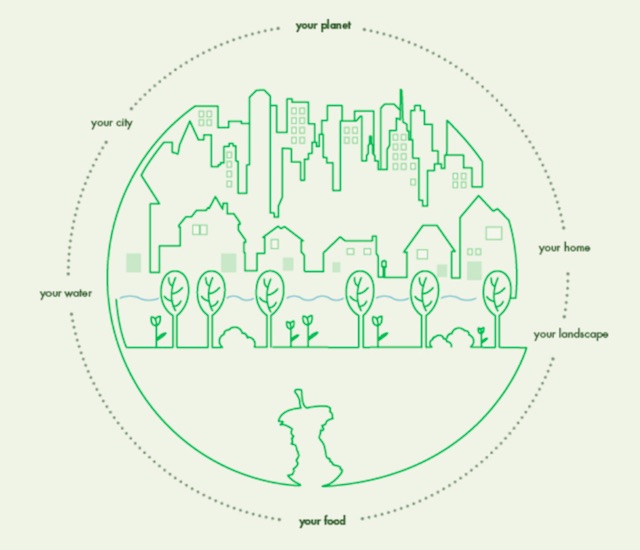
Compost Use in Multi-Family Residential Developments
Maintaining engagement among multi-family residents for resource recovery programs can be overwhelming for building owners and property managers. We are finding the “Eco-Ambassador” or “champion” to be a potentially effective and replicable model/solution for improving and maintaining the effectiveness of waste diversion programs.
In these programs, Eco-Ambassadors are property managers or residents that serve as an on-site educational resource and liaison among their neighbors. The Eco-Ambassador takes a more hands-on role in the implementation and continuation of their building’s recycling/composting program.
The approach, deployed in 2017 and continuing through into 2019, has included ten cities/agencies (City of Santa Monica, City of San Clemente, City of South San Francisco, City of Antioch, City of Martinez, City of San Francisco, as well as Cal Poly San Luis Obispo and Loyola Marymount University). Currently, more than 100 citizens have signed on to improve waste diversion throughout their buildings in these ten cities, and a partnership agreement is underway to continue the ambassador program for one year with the City of Santa Monica, with the option of renewal for up to three years. We’re also working with Southern California waste hauler, Athens Services and the City of Los Angeles to implement a Recycling Ambassador program to address recycling contamination and multi-family resident participation.
To date, phase two has resulted in thirteen project sites yielding 348 lbs of organic waste weekly, or 18,093 lbs annually. Additionally, our ECO-AMBASSADOR PROGRAM GUIDEBOOK developed in 2018 with support from Walmart Foundation, provides a starting point in developing an Eco-Ambassador Program. The book has been distributed and presented to 14 cities providing a step-by-step process individuals can take to develop a successful outreach program.
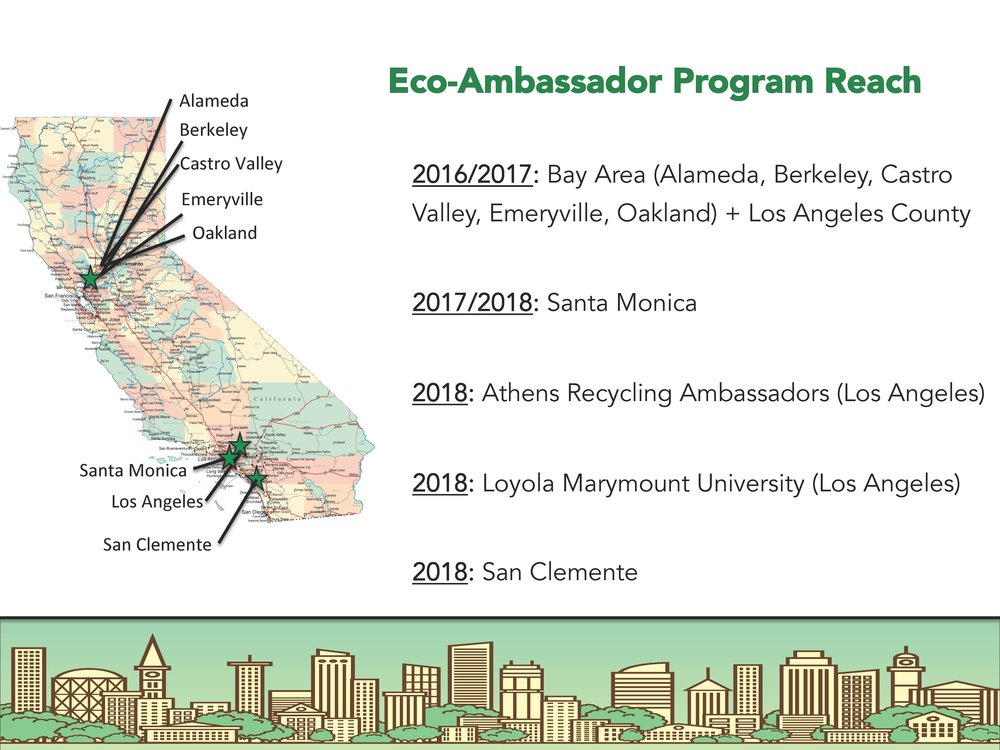
To address the issue of program sustainability in this phase of our work, we have deployed and refined data tracking, evaluation and project management methods through the use of tracking worksheets and follow up surveys, improving data collection and participant response.
Eco-Ambassador Successes
As we continue to expand the reach of the Eco-Ambassador program, we have developed several strategies for ongoing refinement and evaluation. In short, efforts put forth include, activating peer-to-peer networks to allow sharing of lessons learned, the development of a recognition or awards program for ambassadors, incorporating within existing local volunteer programs and including as a component of new tenant “welcome packets” by property managers.
These strategies are currently being considered with the national property management company, Avalon Bay Communities, and are being explored with employees of commercial food establishments in the City of Santa Monica as well as for student programs at Loyola Marymount University in Los Angeles and Cal Poly San Luis Obispo.
Market Transformation: Creating Modular and Scalable Composting Systems
Sustainable Cities & Community Infrastructure Projects
Often, both food waste processing facilities and users of compost are typically located at significant distances from the urban sources of waste generation. This misalignment creates cost inefficiencies and additional greenhouse gas emissions. Locating conventional food waste processing and composting facilities within urban areas also poses a number of permitting and community acceptance challenges.
Starting with reduction and donation, Earth2Green’s team is partnering with urban planners, city agencies and community groups to evaluate how food scraps from specific neighborhoods can be recovered most efficiently through “Distributed Food Scrap Processing Infrastructure” and increasing the use of compost and other products made from food waste. This work produces healthy soil, and as a result, is helping advance stormwater management efforts contributing to overall resiliency.
NYC / Maryland / Atlanta
Currently, we’re working to identify, model, and replicate case studies of successful projects where food scraps are processed in or near urban areas. We’re taking inventory and researching compost use in the built environment where compost can improve stormwater retention by increasing water holding capacity of soils. These successes demonstrate the effective use of compost as a green infrastructure and climate resilience strategy.
These “distributed” systems are generally smaller and more agile with the opportunity to have demonstrable impact. For example, the composting system underneath the Queensborough Bridge in New York City is a prime example of small-scale infrastructure; one that can be built out in a modular fashion, allowing flexibility versus building out all at once. A key outcome and benefit has been the ability to develop and sustain a system of this scale within a highly-urban location thereby providing a major source of free compost to other community groups expanding our outreach and capacity-building efforts.
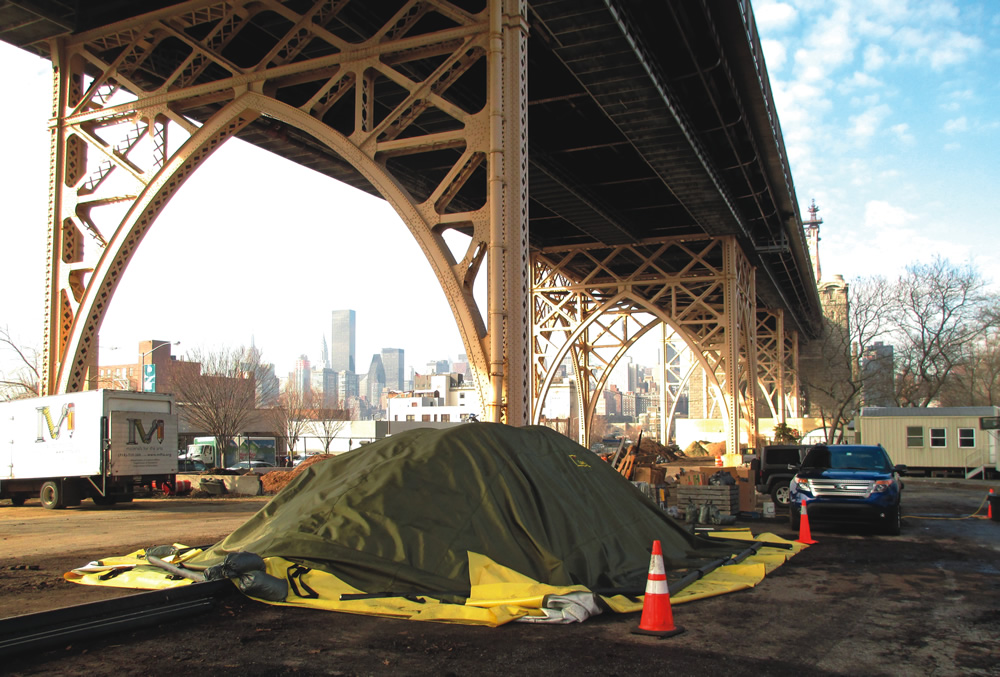
Additionally a pilot project in Prince Georges County, Maryland that started less than five years ago with only three mobile systems processing 250 tons every 2 months – less than 1,500 tons per year – is now processing 12,000 tons per year on a one-half acre parcel. Within the past few months, we arranged a tour with Atlanta city officials to identify opportunities for scaling this small, modular system in Atlanta, GA.
From Demonstration to Scale: Call for Collaborators
Using these kinds of examples, Earth2Green is working to provide cities with technical assistance to engage and mobilize more people in efforts to prevent food waste and better integrate food scrap diversion through city planning efforts – two key factors critical to creating effective programs and scale.
Currently, we’re looking to collaborate with partners in Southern California Gas Company service territory to assess food waste feedstock generation potential and model scenarios for expanded food waste to biogas infrastructure planning.
This community-driven approach is based on prior work by Earth2Green in cities and neighborhoods nationally, where we’ve worked with 30 cities and leveraged more than $280 million dollars in capacity building and investment – with an average of one project or policy implemented per city. Additionally, we seek partners that may have already begun composting efforts at some level but are looking to take their sustainability and community revitalization efforts to the next level.
Residential Strategies for Outreach
New Orleans Libraries and Food Waste Drop Off
In many cities, residential food scrap diversion is not available beyond individuals with the ability to compost in their own yard. For our work with multifamily dwellings, generally, individual yards are not large enough to produce the capacity needed for adequate compost distribution.
To support local efforts in New Orleans, Earth2Green has provided food waste collection bins to facilitate food waste drop-offs, and supported the first food waste drop-off locations in New Orleans, LA. This effort is led by Compost NOW, a local community group project and partner with Friends of the New Orleans Public Library. Utilizing grant funds from Walmart Foundation, Earth2Green has helped the expansion to five additional sites diverting an estimated 12,000 lbs of food waste from our project thus far. Part of our ongoing evaluation will include identifying strategies that could be broadly deployed as a part of a larger project on food waste management.
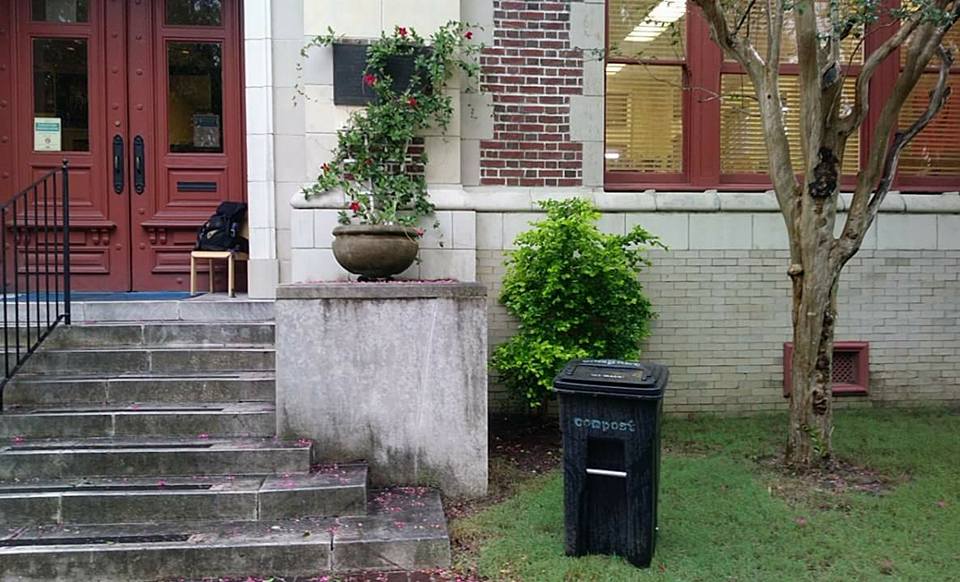
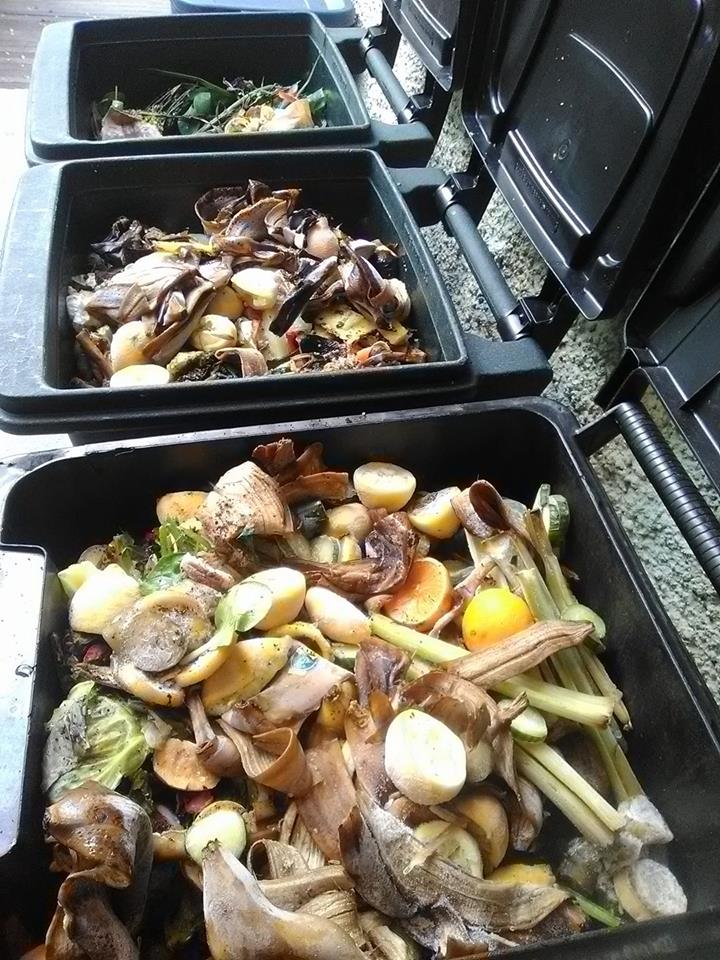
We have also begun incorporating both outreach and waste data tracking methods (i.e. online survey and hard-copy worksheets) into programs launched this past Fall 2018, and an Ambassador Workbook has been created to serve as an interactive learning tool for community training workshops and the Eco-Ambassador Program more broadly.
Southern California Eco-Ambassador Programs
Work to expand the Eco-Ambassador outreach model has grown over the past two years. To start, we piloted an initial test of waste bin sensors at Earth2Green’s Santa Monica office in 2017 and continuing over a 12-week period in early 2018, we had enrolled four buildings in the food waste diversion program (two market rate and two affordable housing). In the sensors pilot, remote sensors were installed to assess the volume of material, measuring fill rates and collection frequency.
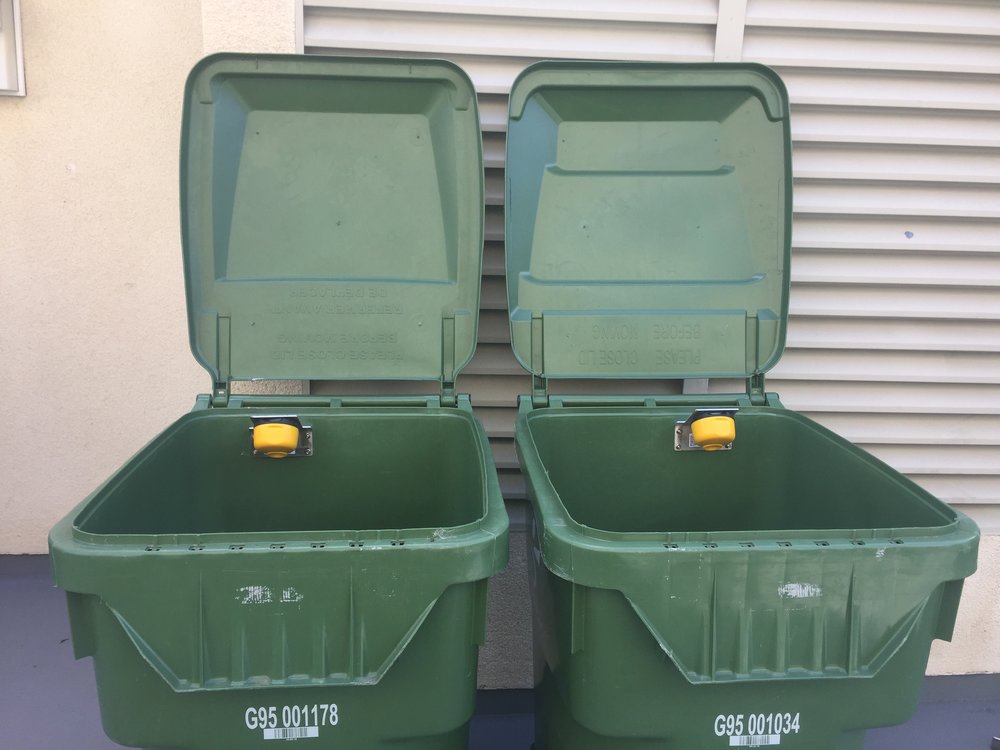
Following these initial pilots, we convened the City of Santa Monica, AvalonBay Communities (a national real estate investment trust), Community Corporation of Santa Monica (an affordable housing property management company), and Enevo (a waste bin sensor company) to define strategies for wider waste bin sensor deployment. We’re working to refine the economic model on the benefit of the sensors under different waste billing structures to assess what property managers would most benefit from this program and meet regulatory mandates.
Also, a grant from Southern California Gas Company (SoCalGas) is helping fund the development of Eco-Ambassador programs in 1 to 2 additional cities in Southern California. Workshops and other engagement strategies are underway to include ways to better track the program’s success including the installation of waste bin sensors. These piloted technologies are a substantial leap for Earth2Green, enabling us to track the program remotely and more efficiently, and in reducing waste in multi-family residences.
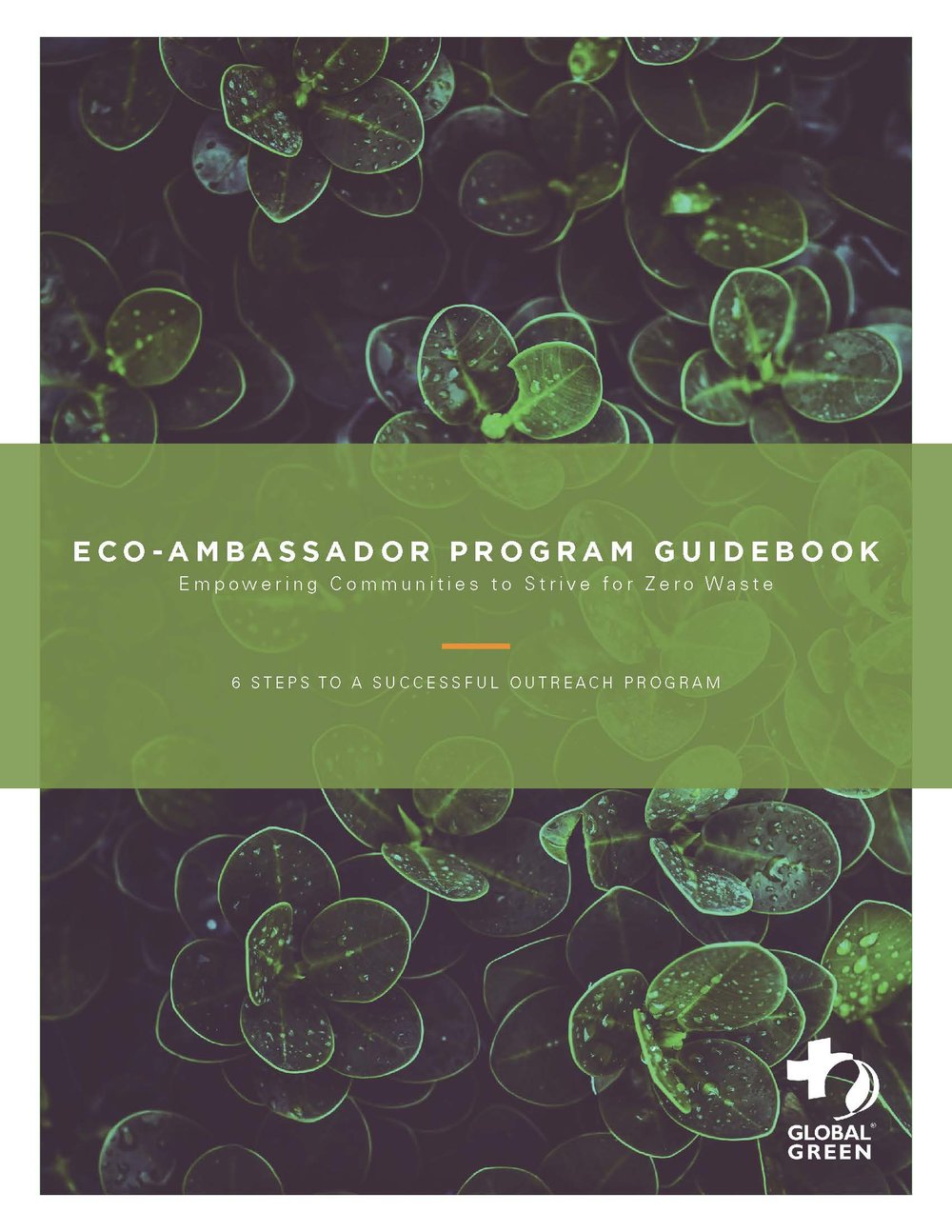
From our work this year, an average of 1.5 lbs of food waste per household was diverted from landfills and overall, the program has supported over 100,000 lbs of organics diverted from landfill. The Eco-Ambassador Program has also recently received a California Resource Recovery Association “Outstanding Recycling Program” Award.
Join Us in Transforming Waste Into Assets! For more information on how your city can be considered for the Eco-Ambassador Program, and/or for food to biogas infrastructure scenario modeling, contact us at sustainability@earth2green.org !




